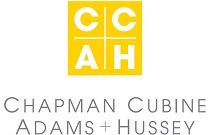
|
The Good, The Bad, and The Ugly: What We Learned About Integrated Fundraising by Donating to Sixteen Major U.S. Nonprofit Organizations
|
|
Posted by Guest Blogger at Apr 24, 2014 07:00 AM CDT
|
This article was written by guest author Peter Schoewe, vice president and director of analytics at Mal Warwick | Donordigital. He brings over 15 years of experience in direct response fundraising with a focus on creating strategy built upon a foundation of strong analysis.
 At Mal Warwick | Donordigital, we implement direct response programs that focus on integrated donor solicitation, cultivation and stewardship across multiple channels. In an effort to learn more about what others are doing, we studied sixteen major nonprofit organizations to give us a snapshot of what some of today’s leading charities are doing.
At Mal Warwick | Donordigital, we implement direct response programs that focus on integrated donor solicitation, cultivation and stewardship across multiple channels. In an effort to learn more about what others are doing, we studied sixteen major nonprofit organizations to give us a snapshot of what some of today’s leading charities are doing.
For six months in 2013, we tracked all interactions with these organizations through direct mail, online and telephone. Our goal was to observe how some of America’s most notable charities are integrating their donor communications across multiple channels.
Most organizations we studied did integrate new online donors into other channels—most notably direct mail. Although we received contacts through multiple channels, the communications rarely appeared to be integrated. And for some organizations, the cross-channel conversion efforts took shockingly long.
Here’s a look at our study highlights:
Channel Integration
- GOOD: Most organizations did integrate new online donors into other channels—most notably direct mail.
- BAD: Although we received contacts through multiple channels, the communications rarely appeared to be integrated.
- UGLY: One organization sent just one direct mail communication in the 6 months following our initial online gift.
Second Gift Conversion Through the Mail
- GOOD: We almost always received an ask to make a second gift through the mail.
- BAD: We were asked for an additional gift through the mail often months after our initial online gift.
- UGLY: 3 of the organizations did not ask for a second gift in the mail in the 6 months following our initial gift.
Sustainer Recruitment Through Any Channel
- GOOD: 75% of the organizations asked us for a monthly gift.
- BAD: 25% did not ask us for a monthly gift.
- UGLY: 44% of the organizations never asked us to become a monthly donor via an email appeal—even though we made our first gift online!
We approached this study armed with the knowledge that integrated communications are necessary for an optimized fundraising program.
We know multichannel donors—donors who make gifts through more than one channel—are very valuable. We have seen consistently that multichannel donors are more loyal than single-channel donors. We also know they are more likely to make larger gifts or become monthly donors, even when controlling for the frequency of giving of the single-channel donors.
From a cultivation and donor retention perspective, multichannel integration is key to achieving greater fundraising success.
But the reality of today’s donor experience at several of the organizations we studied surprised even our most experienced team members. We found a wide variety in the practices for multichannel donor engagement among the organizations we studied. Some organizations are doing a great job. But for others, even the most basic principles of integrated fundraising were neglected.
As an industry, we’ve come a long way from the days of limited (and not very creative) personalization and mass marketing practices of old school direct mail. But this study shows there is still much room for improvement—even in some of the largest and most sophisticated direct response programs.
We are firm believers in building a multichannel conversation with donors that thanks them, inspires them—and creates friends you can count on for a lifetime of support. The truth is this, if you are facing declining retention and lower revenue from your donors, you can no longer afford to operate in a single channel world. New donors are precious to every organization. By making multichannel integration a priority for your new constituents, you will increase their loyalty and value. You’ll also treat them better, offering a cohesive interaction with your organization and multiple ways to stay engaged.
Here’s a few core principles we recommend to improve your multichannel fundraising program:
- Tear down the database (and any other) walls that are inhibiting you from quickly and effectively thanking new donors and integrating them into additional channels of communication.
- Respect the interest and excitement of new donors and quickly offer them ways to more deeply engage with you—specifically monthly giving. Our experience has shown that the probability of getting a second gift drops by half for each month you delay asking for that critical second gift. And we know new donors are most receptive to monthly giving asks.
- Everything cannot and should not be integrated. But coordinated campaigns that allow donors to hear one voice from the organization across multiple channels are not only effective but allow donors to change their method of giving, which increases their overall value. Your communications should reinforce each other—not fight against each other.
You can download the full findings of our study Integrated Fundraising: The Good, the Bad & the Ugly at http://www.malwarwick.com/.


















